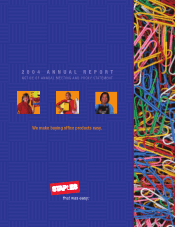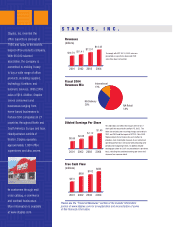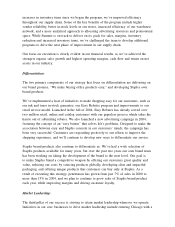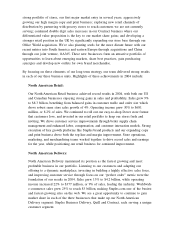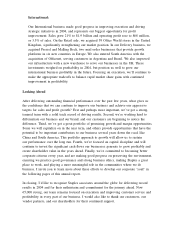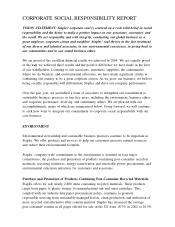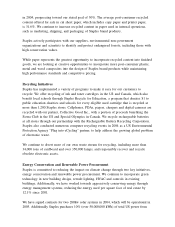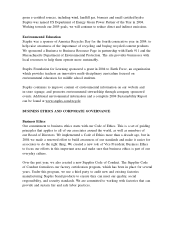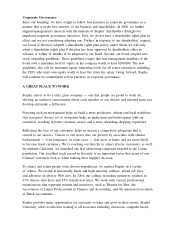Staples 2004 Annual Report Download - page 9
Download and view the complete annual report
Please find page 9 of the 2004 Staples annual report below. You can navigate through the pages in the report by either clicking on the pages listed below, or by using the keyword search tool below to find specific information within the annual report.in 2004, progressing toward our stated goal of 30%. The average post-consumer recycled
content offered for sale in cut sheet paper, which includes copy paper and printer paper,
is 31.6%. We continue to increase recycled content in paper used in internal operations,
such as marketing, shipping, and packaging of Staples brand products.
Staples actively participates with our suppliers, environmental non-government
organizations and scientists to identify and protect endangered forests, including those with
high conservation values.
While paper represents the greatest opportunity to incorporate recycled content into finished
goods, we are looking at creative opportunities to incorporate more post-consumer plastic,
metal and wood composites into the design of Staples brand products while maintaining
high performance standards and competitive pricing.
Recycling Initiatives
Staples has implemented a variety of programs to make it easy for our customers to
recycle. We offer recycling of ink and toner cartridges in the US and Canada, which also
benefit local schools through Staples Recycle for Education, a program that donates $1 to
public education charities and schools for every eligible used cartridge that is recycled at
more than 1,200 Staples stores. Cellphones, PDAs, pagers, chargers and digital cameras are
recycled with our partner, Collective Good Inc., with a portion of proceeds benefiting the
Sierra Club in the US and Special Olympics in Canada. We recycle rechargeable batteries
at all stores through our partnership with the Rechargeable Battery Recycling Corporation.
Staples also conducted numerous computer recycling events in 2004 as a US Environmental
Protection Agency “Plug into eCycling” partner, to help address the growing global problem
of electronic waste.
We continue to divert more of our own waste stream for recycling, including more than
34,000 tons of cardboard and over 350,000 lamps, and responsibly recover and recycle
obsolete electronic assets.
Energy Conservation and Renewable Power Procurement
Staples is committed to reducing the impact on climate change through two key initiatives,
energy conservation and renewable power procurement. We continue to incorporate green
technology in new building design, retrofit lighting, HVAC and controls in existing
buildings. Additionally, we have worked towards aggressively conserving energy through
energy management systems, reducing the energy used per square foot of real estate by
12.1% since 2001.
We have signed contracts for two 280kw solar systems in 2004, which will be operational in
2005. Additionally Staples purchases 10% (over 50,000,000 kWh) of total US power from

